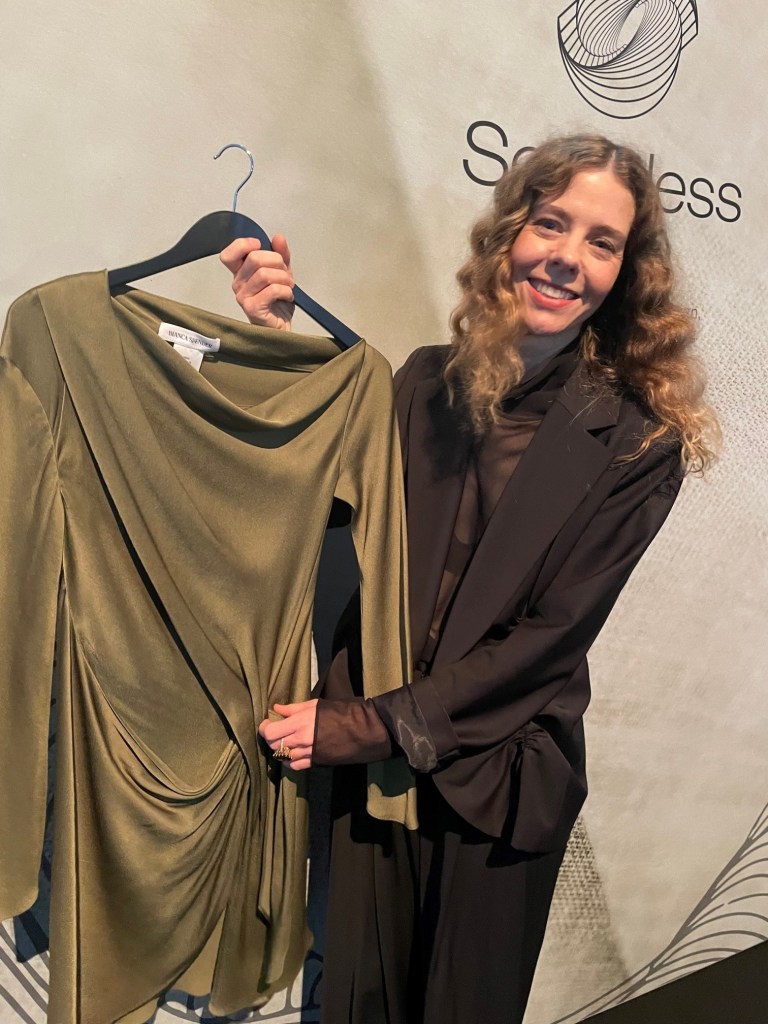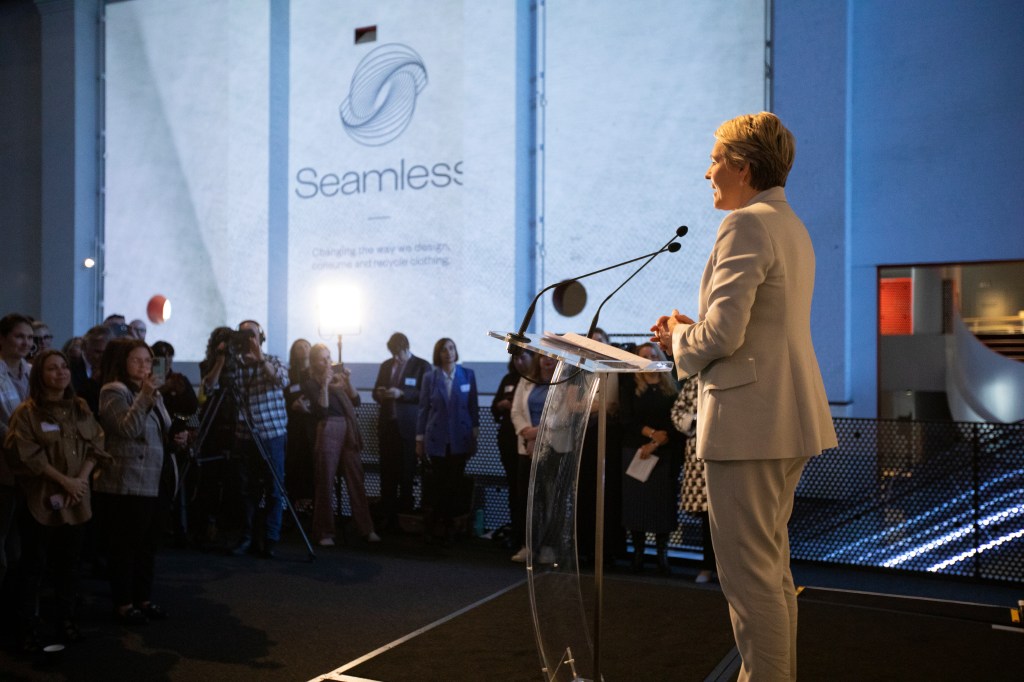Environment minister Tanya Plibersek has given the rag trade a one-year warning that it needs to get on board with re-using and recycling … or she’s going to take over.

Skinny jeans might not be dead, but wearing them will take a lot more squeezing in the future as fashion-industry leaders signed up to a new range of re-use and recycling measures yesterday that would ultimately see them avoiding fabric blends like stretch jeans.
Six industry leaders agreed to a 4-cents-per-item levy on each piece of clothing they sell to go towards creating a circular clothing economy in an effort to minimize the 250-million tonnes of clothing waste produced by Australians each year.
Big W, David Jones, Lorna Jane, Rip Curl, RM Williams and THE ICONIC committed $100,000 each to fund a 12-month transition phase while the Seamless scheme is established and other players in the $27.2-billion local industry were encouraged to join.
Federal environment minister Tanya Plibersek gave a stark warning to the industry that if it didn’t make the Seamless scheme work, the government would.
“We have a choice here,” Plibersek said. “This can be an industry-led approach. You collect the money, you decide how the money is best used, you invest in the research you need, you invest in the collection systems you need. You take charge … Or I’ll do it. This is your one-year warning. This is too big a problem to turn our backs on.

“I don’t want to be making these decisions for you, but if I don’t see enough movement in a year, then I will regulate.”
Among the ways to make the industry more sustainable was cutting out fabric blends because they are more difficult to recycle, said Bianca Spender, founder of the eponymous clothing label and daughter of fashion legend Carla Zampatti. “You can have something that’s 97% cotton and 3% spandex, and that 3% renders it really complicated to recycle.” By comparison, 100% cotton denim was a “gift to recyclers”.
Even 100% polyester was better than a blend, she said. Stretch jeans – typically a blend of cotton, spandex and polyester – were “fundamentally compromised when it came to recycling,” Spender said. But that didn’t mean skin-tight jeans would be confined to the rag bag of fashion history, she said. Consumers could relearn to squeeze into them. “The skinny jean was around in the 70s. It just didn’t have spandex. We have to shift our mindset around how everything feels and what we wear.”
Seamless – formerly the National Clothing Product Stewardship Scheme – aims to drive the rag trade towards clothing circularity by 2030 through:
- Incentivising clothing design that is more durable, repairable and recyclable.
- Fostering new circular business models on reuse, repair, re-manufacturing and rental.
- Expanding clothing collection and sorting for effective resale or, if beyond repair, to be recycled into new high-value products and materials.
- Encouraging consumers to change their habits on buying, using, repairing and disposing of clothes.
Aside from using pure fabrics, Spender cited a green mini-dress to explain how the design was the first step in sustainability. “It has an adjustable waist tie so it can grow or shrink with you. And having that adjustability is important. You can lend or borrow it or find a second home for it when you move to the country and don’t need that special dress anymore. But you can also wear it over pants or take the tie out, and wear it back-to-front so it opens up. It’s changing the way we see things.”

Matt Davis CEO of Salvo Stores grabbed the minister after the launch for a chat. “She’s really interested in the sorting,” Davis said. “The issue is the unwearable clothes. A really beautiful jacket isn’t a problem. We can sell that. But kids’ tracksuit pants with holes in them, Australia doesn’t have any solutions for that.”
Plibersek asked Davis if the issue was the technology or the funding. “The tech is available,” Davis said. “It’s emergent in Europe. It can break trackies down into new threads. The barrier is funding to build that equipment onshore, at scale. Seamless will create a funding mechanism to fill those gaps.”
Davis told Forbes Australia there was an important place for start ups and innovators. “The Salvos and others like us have been doing retail recycling for about 130 years – and only three years ago, nobody was talking about a circular economy. We felt like we were in this alone.” Davis said startups needed market certainty and seed funding. “A chemical recycler has just opened in Queensland that can handle 10,000 tonnes a year. But the challenge is upward of 250,000 tonnes. They can take polyester and turn it into pellets, but there aren’t any remanufacturers to use them. We’ve got the skills but not the funding.”


